This Monroe, Ohio-based store wins mattress sales with eye-catching design, well-trained staff and a commitment to customer care
| Photography by Len Kaltman/West Chester Corporate Photography |
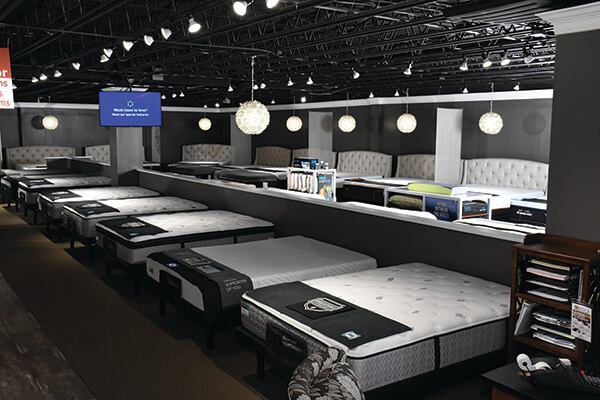
It’s only in the store name that bedding takes second place at Riley’s Furniture & Mattress. From a can’t-miss mattress department that greets every customer entering the store to the cross-trained furniture sales associates who sell bedding, too, the retailer demonstrates its commitment to mattresses.
“Our goal is to improve a customer’s quality of life. Chairs and entertainment centers can do that to a certain extent, but the right mattress and base can help you sleep better. People gain so much from the proper support of a mattress and the sound sleep it gives them,” says Frank Leslie, lead sleep specialist and mattress buyer for the family-owned store in Monroe, Ohio. Leslie started his mattress career with a waterbed dealer in 1988 and went to work for Riley’s in 1993.
Show more, sell more
In 2015, to coincide with its 45th anniversary, Riley’s undertook a major remodel of its two-story, 30,000-square-foot showroom. As part of the renovation, the retailer moved the mattress department from the second floor to the first, just to the right as shoppers enter the building.
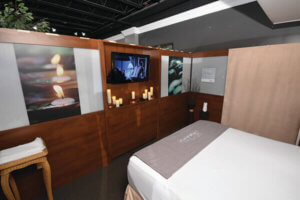
“Even if you’re not coming to the store for a mattress, we’re catching your attention,” Leslie says. “It gets you thinking you might need a mattress for the guest room or maybe have been putting off a new mattress for yourself. It lets people know we’re seriously in the mattress business.”
The well-thought-out mattress department — with about 40 models in roughly 3,500 square feet — is designed to focus shoppers’ attention on mattresses and key sleep accessories. The area is dressed in elegant, restful hues of gray and black with accents like sculptural globe pendant light fixtures. Because the retailer doesn’t want anything to clutter the clean look, the department is free of promotional posters, lifestyle imagery or even pillows on the beds. To offer shoppers some privacy, the retailer has hung narrow beaded curtains between premium mattress models that line the area’s outer walls. Other mattress sets are lined up neatly along a short wall, which also affords a measure of privacy during rest-testing.
Riley’s carries Sealy, Stearns & Foster and Tempur-Pedic brands. Prices range from $399 for a mattress-only Sealy to about $12,000 for a king-size Tempur-Pedic with an adjustable base. The average ticket is nearly $1,900.
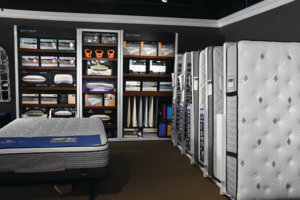
The retailer’s selection of value- priced bedding and a boxed Health 1st mattress are displayed in a rack from the Royrack Co. that allows twin-size models to be stored on end and then pulled easily onto a platform. Riley’s started carrying the Health 1st brand, a private-label line from Brooklyn Bedding available through the Furniture First buying group, in late 2018.
Most premium mattresses are shown in king size to help shoppers better appreciate the additional space a king can offer sleeping partners. “Some people can’t visualize the difference between a queen and a king and the room a king gives them,” Leslie says. “And when you show more kings, you sell more kings.”
Riley’s applies that “show more, sell more” philosophy to adjustable bases, too. The retailer positions power bases under all of its floor models, carrying three step-up Tempur-Pedic versions: the Ease, Tempur-Ergo and Tempur-Ergo Extend. Such an expansive presentation means shoppers don’t have to try to imagine how their preferred mattress would feel with adjustability.
But it’s not just displaying adjustable bases that pushes attachment rates as high as 80%. No, rates like that come from a sales strategy that assumes all shoppers can benefit from an adjustable base, whether they come in looking for a guest-room bed or have a $499 queen set price tag in mind.
Leslie tells the story of once, as he was writing up a mattress sale, hearing his customers talk about a doctor’s appointment for their child, who suffered a respiratory ailment.
“I told them I couldn’t help but hearing and that I wanted to show them the capabilities of the mattress with an adjustable base, how the head elevation might make it easier for their son to breathe a little better. I told them, ‘Talk to your physician.’ ” Leslie didn’t push the parents to buy the base that day or imply it was a medical device but simply introduced the couple to the product, explaining its features and benefits. Of course, they ended up purchasing one for their 8-year-old’s bedroom. With experiences like that guiding them, retail sales associates strive to give an adjustable base demonstration to every shopper.
“Taking care of the customer”
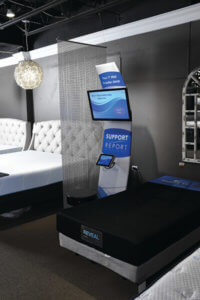
Early in the store’s history, founder and President Riley Griffiths created an ethos of treating shoppers as guests rather than customers. It starts with a store greeter welcoming visitors and pairing them with an RSA, who will offer refreshments like coffee, lemonade, pretzels and cookies.
“We are trying to help consumers create their dream room. If, as they shop, a second sales specialist is available, we encourage the second to co-sell with the first. There’s no competition because we don’t operate on commission, and we can better serve the consumer that way,” says Kevin Lewis, general manager. The retailer, which employs two designers, also offers complementary in-home interior design services. “It’s not about building a ticket but about taking care of the customer,” Lewis explains.
That same attitude extends to the mattress department, where Leslie and his team help shoppers create a bedding ensemble to suit their needs and budget. “We try to take the approach that every customer coming in is a friend or family member,” Leslie says.
The store has a staff of 16 RSAs, with six cross-trained to sell mattresses, and, in 2017, the retailer hired Miranda Dolan as a sleep specialist to assist Leslie. “If I’m present, I’m helping the customer, but Miranda is my proficient lieutenant who assists if I’m not here,” he says. “There’s always someone with deep mattress knowledge available.”
Everyone in the mattress department receives quarterly training, which might include a visit from a vendor’s representative, a lesson on sales techniques or a trip to a manufacturer’s factory. RSAs also receive one-on-one training.
“I don’t expect them to know everything, and we all can keep learning,” Leslie says. “I encourage them to call me at home if they have questions. I love that: It means we’re taking care of the customer.”
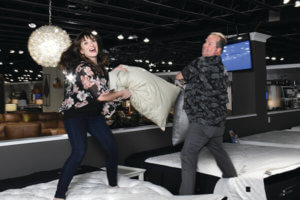
For shoppers, a visit to the mattress department begins with a pillow fitting using options from Bedgear. “We’ll fine-tune to find a pillow they like that they can take with them as they look at beds and then, as they are trying an adjustable, we’ll fine-tune even more,” Leslie says.
In addition to Bedgear pillows, the retailer sells Bedgear protectors and sheets, and it recently added an array of sheets from Malouf. RSAs talk about the benefits of sleep accessories throughout the sales conversation, a technique that raises attachment rates. “Virtually every sale is going out with a protector and usually a set of sheets and pillows, too,” Leslie says.
To assess shoppers’ mattress needs, RSAs ask a series of questions about their mattress preferences, sleeping habits and health issues. “It only takes two to three minutes to ask the questions that will help you fit a mattress to their needs,” Leslie says. “They might tell me they’re a stomach sleeper whose back is killing them and they sleep on a pillow-top. I can help them not make that mistake again.”
With information gleaned during those queries and a rest-testing process that typically begins with two Tempur-Pedic models to assess shoppers’ comfort preferences, Leslie and other RSAs help winnow shoppers’ choices from the dozens of mattresses on the floor to a handful that might be right for them.
“After we narrow down to an ideal mattress or maybe two, I’ll introduce the adjustable base,” Leslie says. “I don’t want them to have to think about too many things at the start. After we nail the comfort, I can say, ‘Let me show you how you can get even more out of your mattress’ and let them experience what an adjustable base’s features can do. Many people say, ‘I’m not remotely interested in that.’ I’ll say, ‘Just let me show you’ and I’ll raise their head or feet a bit. You’d be amazed how many people say, ‘Mmm, this is nice.’ ”
Price concerns are real, especially for shoppers who originally might have come in for a midpriced queen set but, after rest-testing, are thinking about a king-size premium set or adjustable base.
“If they say, ‘I love this but I can’t afford it,’ I’ll tell them we want them to be physically and financially comfortable, and we’ll look at financing options because we have excellent interest-free financing with approved credit,” Leslie says. “Or, if they want an adjustable base, we’ll maybe look at a more basic system rather than one with all the bells and whistles. The basic systems are still excellent and offer all the benefits of elevation. Or, I’ll remind them they can always come back later for the adjustable base. We have people who will do that even two or three years after they buy their mattress.”
“But it’s always a soft-sell approach,” Leslie adds. “We’re sincere about truly trying to educate you and find what’s best for you. That might be a $7,000 mattress and adjustable base or it might be a $499 set.”
Riley’s provides delivery and in-home setup of new bedding for a fee, from $69 for a twin set to $149 for an adjustable base. The retailer doesn’t remove old bedding from the home but will relocate it to another room on the same floor or take it to the curb or garage. “We don’t want to risk contaminating our trucks or other people’s homes, and people understand that,” Leslie says. “There are charities in the area that will pick mattresses up and waste companies will take them if properly folded and bagged.”
A concierge service makes delivery of both furniture and mattresses memorable for customers. “As the merchandise is delivered,” Lewis says, “we have one of our charismatic specialists meet the delivery driver at the home to present them with a special package — a Starbucks gift card, a Riley’s drinking glass, coupons for them and also for a friend.”
The retailer offers a 90-day trial period for mattresses, allowing customers to make another selection one time, but asks that they keep their new mattress at least 30 days before returning it. “Physically and psychologically, they’ve been used to a different mattress, and any new mattress tends to be firmer at first,” Leslie says. “After that initial period, most people are happy. If they’re not, I tell them, ‘We’ll take it away and make you happy. That’s how important you are to us.’ ”
The sales strategies and customer service work. “We have people buy their first mattress set at Riley’s, then buy their second set and then a set for their kids. I tell them to call me Uncle Frank. They send their friends and relatives in. We earn the relationship.”
A Retailer That Never Rests on Success
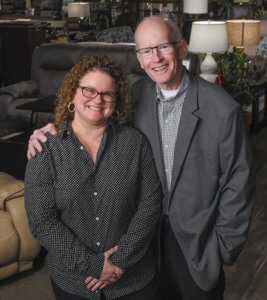
Riley’s Furniture & Mattress doesn’t just take its name from founder and President Riley Griffiths — virtually every aspect of the store is imbued with his spirit.
Griffiths started the business as a furniture depot in Middletown, Ohio, and then expanded to a second store called Gracious Living in nearby Monroe, Ohio. In the first few years, Griffiths had a partner, but the two amicably went their separate ways in 1974.
In the early 1980s, Griffiths closed the depot and changed the name Gracious Living to Riley’s Furniture Gallery. Around that same time, he made another big switch, putting his sales staff on salary so they could focus solely on customers rather than commissions. In 1988, Griffiths bucked another common retail practice, closing the store on Sundays to give employees more time with their families. (See story on page 26.) Both decisions reflected Griffith’s belief that it is happy, satisfied people — both employees and customers — that drive his business.
Of course, profits matter, too. The retailer is a founding member of the Furniture First buying group, which gives independent retailers the buying power of larger companies. And, in the early 2000s, Riley’s began opening branded vendor galleries to elevate its product selection. In 2014, Griffiths hired the well-known Martin Roberts Design firm to redesign the store, with the new look unveiled in 2015.
“Riley spared no expense to create the vision of the store. His favorite line is, ‘It’s only money,’ ” says general manager Kevin Lewis, with a laugh. This year, Riley’s hired Martin Roberts again to recommend tweaks to the store. “The store design isn’t broken but we’ve made some changes since the remodel and we always want to know what we can do to enhance the look,” Lewis says.
Since being diagnosed with an illness last year, Griffiths has cut back on the amount of time he spends at the store each week, but “he’s still extremely hands-on,” Lewis says. “He communicates regularly with us, sharing his comments, thoughts and ideas,” he explains. “The man is one of the most creative people I’ve ever met in my life, and he’s always challenged me to think outside the box.”
Griffiths’ daughter, Shannon Bannerman, who is chief executive officer of the company, is much like her father. “She’s just as creative as Riley is,” Lewis says. “She challenges our processes, wanting to understand why we do things the way we do, and see if there’s another, better way.”
Closed for Business (on Sundays)
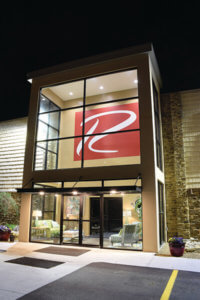
Bucking the retail trend of seven-days-a-week operations, Riley’s Furniture & Mattress has kept its doors closed on Sundays since 1988.
“It’s not a marketing ploy,” says Kevin Lewis, general manager of the Monroe, Ohio-based retailer. “It’s truly an opportunity for associates to spend time with their families, and our customers appreciate Riley’s commitment to family values.”
Although its competitors are open on Sundays, being closed one day each weekend hasn’t significantly hampered sales. “When (founder and President) Riley (Griffiths) implemented that policy, he looked at the numbers and knew it might be crazy, but it was the right thing to do for our employees and our families,” says Kyle Baker, marketing director. “Our customers understand and have adapted.”
The retailer is about halfway between Cincinnati and Dayton, Ohio, and draws customers largely from a 50-mile radius. The location presents some challenges, including the need to advertise in two media markets. In addition, the retailer’s customer base is increasingly diverse, including both locals who know the store well and an influx of well-paid, white-collar workers drawn to employers like Procter & Gamble, Lewis says.
To reach potential customers, the retailer is launching a new TV campaign and has been investing more in digital marketing, including email blasts to targeted lists, display ads and social media. Riley’s also uses tried-and-true methods like direct mail. “It seems antiquated, but it gets a strong response and provides top-of-mind awareness,” Baker says. “It gets our message out, and we can pick and choose ZIP codes for the most fertile territory.”
In all advertising channels, the retailer mixes promotional and call-to-action messages with relationship-building themes emphasizing factors that set Riley’s apart from competitors. “When people think of Riley’s, we want them to think it’s a great place to shop for furniture,” Baker says. “Our focus is on them enjoying the shopping experience as much as the brand-new furniture.”
Understanding the need to compete as an omnichannel retailer, the retailer also is upgrading its website for a better e-commerce experience. “We’re not looking to become the next Amazon or Wayfair, but today you have to be an omnichannel retailer and present yourself in the places customers want to find you and in the ways they want to shop,” Baker says.
A new chat feature encourages consumers to communicate with the store via text message. “The response has been even better than we expected,” he says. “It’s just another way for us to connect with customers with a goal of really engaging with them.”
Baker adds: “We’re all about trying new things. Riley has never been afraid to experiment and gained a reputation in the industry for being a bit of a ‘mad scientist.’ He always says, ‘If it doesn’t work, we’ll learn from it.’ To survive in this industry, that’s critical.”
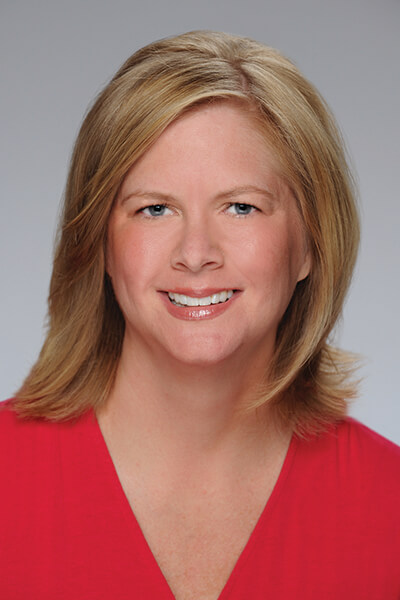 Julie A. Palm is chief wordsmith at Palm Ink LLC in Winston-Salem, North Carolina. She has 25 years of experience as a writer and editor for newspapers and magazines and as a publications director. She is a past editor in chief of both Sleep Savvy and BedTimes magazines. She can be reached at japalm623@gmail.com.
Julie A. Palm is chief wordsmith at Palm Ink LLC in Winston-Salem, North Carolina. She has 25 years of experience as a writer and editor for newspapers and magazines and as a publications director. She is a past editor in chief of both Sleep Savvy and BedTimes magazines. She can be reached at japalm623@gmail.com.







